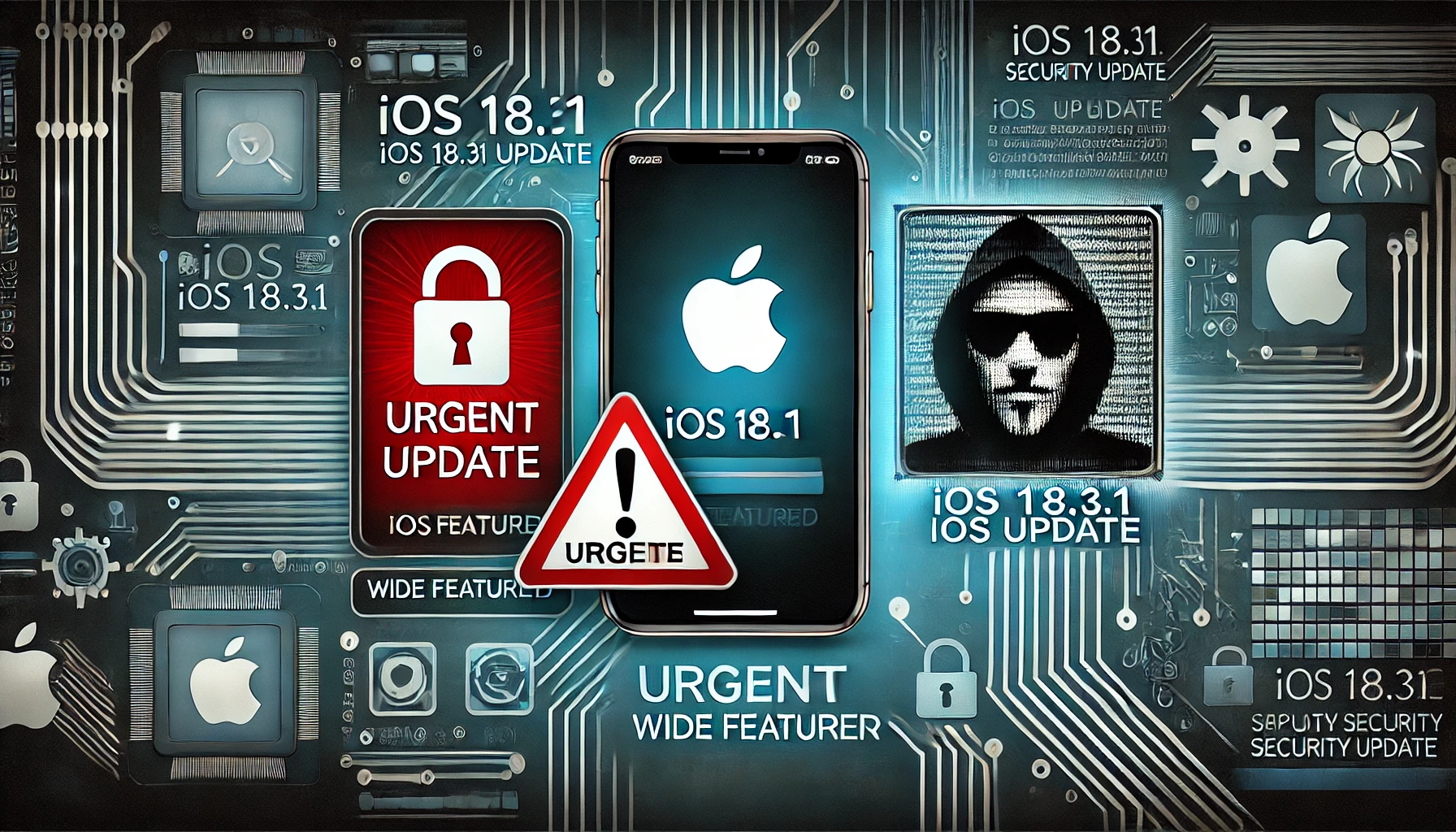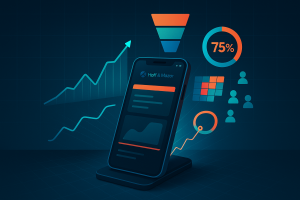Apple has just released iOS 18.3.1 in a bold move to protect users from a newly discovered zero-day vulnerability, and the company is urging iPhone and iPad owners to update immediately. In this comprehensive article, we explore what the update means, break down the technical details in simple terms, and offer practical advice to help users stay secure. Whether you’re a seasoned Apple aficionado or a newcomer to the ecosystem, read on for an in-depth look at why this update is essential for everyone.
A New Chapter in Mobile Security
Even the most trusted companies face unforeseen security challenges. Apple’s recent launch of iOS 18.3.1 comes in response to a serious zero-day vulnerability—a security flaw that had gone undetected until recently. What makes a zero-day vulnerability particularly dangerous is that it is exploited before the vendor has any opportunity to fix it. In this case, the vulnerability lies within a key security feature called USB Restricted Mode, which is designed to protect users against unauthorized data access.
What Is USB Restricted Mode?
Imagine your iPhone as a personal safe. When you lock your device, USB Restricted Mode kicks in, effectively shutting down the Lightning or USB ports to prevent unauthorized access. This is meant to stop a would-be attacker from plugging in a cable and extracting your data when your phone is unattended. However, the zero-day vulnerability managed to bypass this safeguard, potentially allowing an attacker to reactivate the port—even when the device remains locked.
This vulnerability is not just a minor glitch; it represents a significant breach in one of the fundamental security measures that millions of users rely on every day. As soon as Apple became aware of this loophole, it prioritized developing a patch, leading to the swift rollout of iOS 18.3.1.
Understanding the Zero-Day Vulnerability
A zero-day vulnerability refers to a flaw that is exploited by attackers before the developers are even aware of its existence. The term “zero day” emphasizes that there is no window for the vendor to fix the problem once it is discovered by malicious actors. In this case, the vulnerability emerged in the authorization system that governs USB Restricted Mode.
To put it simply, here’s what happened:
- Normal Functioning:
When your iPhone or iPad is locked, USB Restricted Mode disables the data ports. This means even if someone plugs in a cable, they can’t access your data without unlocking the device. - The Exploit:
Due to a flaw in the authorization process, an attacker with physical access to the device could trick the system. This flaw allows the USB port to be reactivated even while the device is locked, bypassing the intended security barrier. - The Fix:
With iOS 18.3.1, Apple has closed this loophole. The update ensures that the USB port remains securely disabled when it should be, preventing unauthorized data access via physical connections.
Why This Matters to You
The potential risks associated with this vulnerability are serious. Although a successful exploit would require physical access to the device, the possibility of data extraction—even from a locked phone—is a grave concern in today’s world where personal information is as valuable as gold. The fact that attackers could leverage this vulnerability means that high-profile individuals as well as everyday users are at risk, and the urgency of applying the update cannot be overstated.
Apple’s Decisive Response: iOS 18.3.1 Update
Apple is renowned for its commitment to user privacy and device security. In a rare departure from its typically reserved communication style, the company issued an advisory with strong language, warning users about the potential risks of the zero-day vulnerability. This direct approach reflects the seriousness of the issue and the company’s resolve to ensure that its devices remain secure.
Key Details of the Update
- iOS 18.3.1:
This update is available for iPhone XS models and later. It addresses the vulnerability head-on by reinforcing the USB Restricted Mode, ensuring that the security mechanism cannot be bypassed. - iPad Updates:
Alongside the iOS update, Apple released iPadOS 18.3.1 for current iPad models and iPadOS 17.7.5 for older versions. This ensures that a wide range of devices benefit from the improved security measures. - Urgent Warning:
In its advisory, Apple stressed that users must update their devices immediately. The company warned that, due to the critical nature of the vulnerability, delays in updating could leave devices exposed to sophisticated attacks.
What Apple Is Saying
Apple’s advisory, while straightforward, carries an unmistakable sense of urgency. The company highlighted that a physical attack might override the device’s locked state by exploiting this vulnerability. Such an exploit could potentially give attackers access to sensitive data without requiring the user’s password or biometric verification. For Apple, ensuring that this scenario is rendered impossible is paramount, and the new update is a direct response to this need.
Practical Advice for Apple Users
How to Update Your Device
If you haven’t updated your device yet, here’s how you can do it:
- Backup Your Data:
Before performing any update, it’s always a good idea to back up your device. Use iCloud or connect your device to your computer to ensure that your important data is safe. - Check for Updates:
Go to Settings > General > Software Update. Your device should detect the iOS 18.3.1 update if it’s compatible. Follow the on-screen instructions to download and install the update. - Ensure a Stable Connection:
Make sure your device is connected to Wi-Fi and that it has enough battery life, or connect it to a charger during the update process. - Restart Your Device:
After the update, it’s a good practice to restart your device. This ensures that the new security measures are fully integrated into the system.
Additional Security Tips
Apart from updating, here are a few more tips to enhance your device’s security:
- Keep Your Device Locked:
Avoid leaving your iPhone or iPad unattended in public spaces. Physical security is as important as digital security. - Use Strong Authentication:
Enable biometric authentication (Face ID or Touch ID) and set up a strong passcode to add an extra layer of security. - Regularly Monitor for Updates:
Cybersecurity is an ongoing battle. Check for software updates periodically, as Apple continuously releases patches to address emerging threats. - Be Cautious with Accessories:
Only use trusted and certified accessories. Unofficial cables and docking stations might inadvertently bypass some security features.
What Security Experts Are Saying
Cybersecurity experts have weighed in on the impact of the zero-day vulnerability. Notably, researchers from Citizen Lab were among the first to identify the issue. Senior researcher Bill Marczak pointed out that the flaw could be exploited in highly targeted attacks—especially against individuals with high-profile data. While such scenarios might seem remote for the average user, the potential for abuse underscores the importance of the update.
Experts agree that this vulnerability is a wake-up call. It reminds us that even the best security measures can have weak spots, and that constant vigilance is necessary in today’s digital environment. With devices holding everything from personal photos to sensitive financial information, maintaining the highest level of security is critical.
Industry Impact and Future Trends
This incident is not just about a single vulnerability—it highlights broader trends in mobile security. The intersection of physical access and digital security is becoming increasingly relevant. In many cases, attackers are no longer content with remote hacks; they are looking for ways to gain physical access to devices and bypass layers of security through clever exploits.
The steps taken by Apple with iOS 18.3.1 could set a precedent for future security measures across the tech industry. By swiftly addressing the vulnerability and communicating openly with users, Apple reinforces its reputation as a leader in mobile security. Other companies may well follow suit, adopting similar proactive strategies to combat potential threats.
The Bigger Picture: Cybersecurity in the Modern Age
One of the most intriguing aspects of this update is the way it brings physical security into the conversation about digital vulnerabilities. Typically, discussions about cybersecurity focus on software patches, malware, and phishing attacks. However, the zero-day vulnerability in USB Restricted Mode blurs the line between physical and digital security.
A physical attack—where an attacker needs direct access to a device—may seem less alarming compared to remote hacking. Yet, as this incident shows, even physical attacks can have severe consequences when they exploit underlying digital vulnerabilities. The lesson here is clear: security must be holistic. Protecting our devices means not only safeguarding them from remote threats but also ensuring that physical access points are secure.
User Responsibility in a Connected World
While companies like Apple invest heavily in securing their devices, users also have a critical role to play. The onus is on each individual to ensure their devices are updated, to use strong passwords, and to be aware of potential threats. The recent advisory is a reminder that no matter how secure a device might seem, the ultimate defense against cyber threats is informed and proactive usage.
In a world where digital threats are evolving constantly, staying educated about the latest security updates is essential. Whether you’re reading this article on your smartphone or catching up on tech news during a break, remember that every update is a step towards a safer digital environment.
What to Expect from Future Updates
Continuous Improvements
Apple’s approach with iOS 18.3.1 demonstrates a commitment to continuous improvement in security. Future updates are likely to build on this foundation, incorporating lessons learned from past vulnerabilities and addressing new challenges as they arise. For users, this means that the device you rely on daily will only get more secure over time—as long as you stay on top of updates and heed security advisories.
The Role of Transparency
Transparency is another key takeaway from this incident. Apple’s candid communication about the flaw—not shying away from using strong language to describe the risk—helps build trust. When companies are upfront about vulnerabilities and the steps being taken to mitigate them, it empowers users to make informed decisions. This openness is especially important in a time when cyber threats can seem overwhelming. Clear, accessible explanations like the one provided by Apple ensure that even non-experts understand why updates are so crucial.
In Summary
Apple’s new release of iOS 18.3.1, along with a strong advisory to update immediately, underscores the ever-present need for vigilance in the digital world. The zero-day vulnerability affecting USB Restricted Mode posed a significant threat—one that could have allowed unauthorized physical access to data on locked devices. With this update, Apple has not only patched a critical security gap but has also reinforced the broader principle that no system is infallible.
For every Apple user, the takeaway is simple: update your device without delay. In addition to the practical steps outlined above—backing up your data, checking for updates regularly, and practicing good security hygiene—the real message is about staying informed. Cybersecurity is not just a technical issue; it’s a personal responsibility that affects every aspect of our digital lives.
By understanding the risks, following expert advice, and maintaining a proactive approach to device security, you can ensure that your personal information remains safe in an increasingly interconnected world. With iOS 18.3.1, Apple is setting a strong example of how to respond to emerging threats, and it’s up to us as users to do our part.







